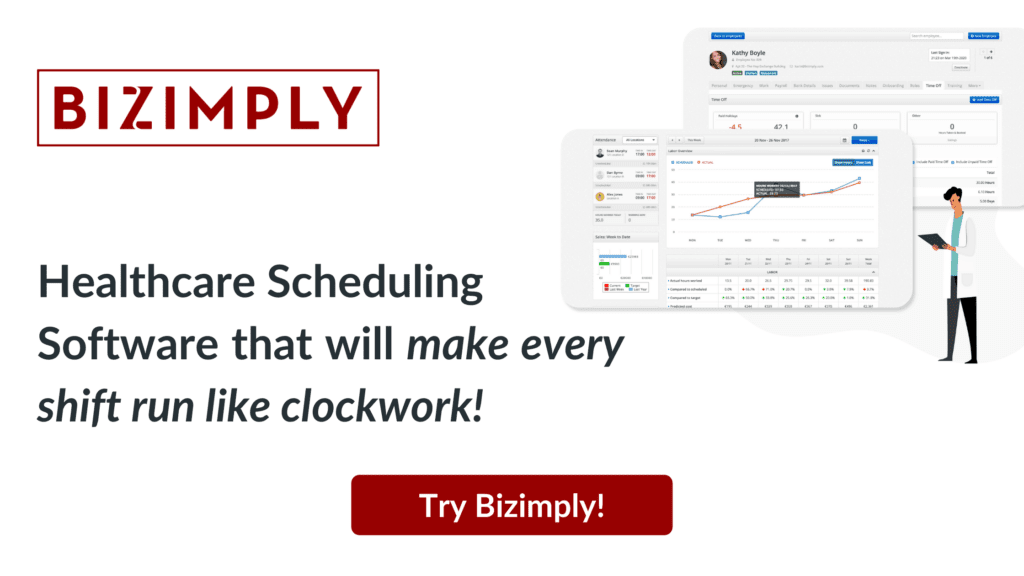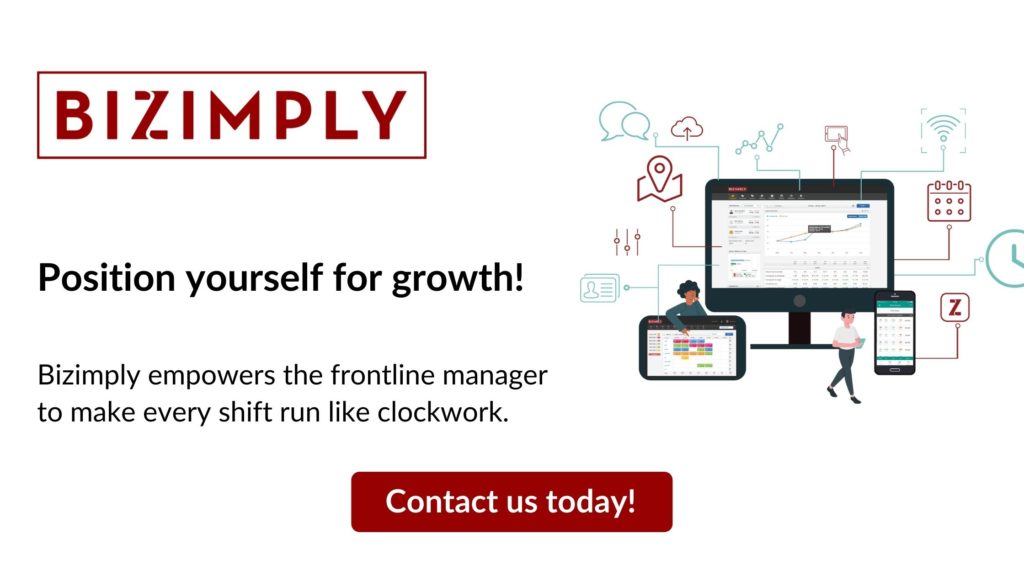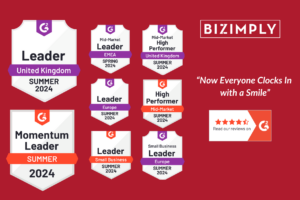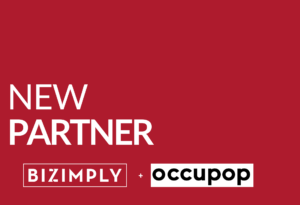The shift to digital is about adopting technology in order to enhance and transform your business or service.
By replacing traditional and non-digital manual processes with newer digital technology, it can fundamentally change your business strategy; how you operate and deliver value to your residents, patients and customers.
Digital transformation involves bringing together data sources such as POS, payroll, purchasing, shift scheduling, appointments, reviews and training into one central reporting location.
Using this data, it delivers meaningful, accessible insight for people at every level of the business which in turn, allows your leaders to make better strategic business decisions.
Overall, digital technology completely streamlines processes and reduces costs at all levels.
This is evident in a digitally empowered business.
For example; investment into scheduling software which helps to save on time and labour costs as well as increases staff morale can lead to better upsell performance and overall contributes positively towards business goals.
Having access to this informational data with digital technology, all in one place allows for contextual comparisons to be made shift on shift. Without a robust healthcare operational platform, this manual process would be a lot more challenging and unreliable.
“77% of survey respondents either ‘strongly agreed’ or ‘agreed’ that cloud technology can help improve resident and patient experiences and optimise operations.”
(Skift, Digital Transformation Report, 2020)
So, what are the benefits?
1. Ensured Compliance
The main purpose and primary benefit of compliance in the healthcare industry is to improve patient care. Patient care is enhanced when healthcare decisions are based upon appropriate and current clinical standards.
Implementing a Workforce Management Software in your healthcare business means managers will no longer have to worry about whether they are sticking to the law or the organisation’s business policy. With a cloud-based system, it will store all patient and resident documents safely and securely.
As a healthcare worker, ensuring your staff are eligible to work in the industry is essential. Once you’ve run checks, that employee needs training.
Having a full record that your staff have passed all pre-employment checks and qualifications will reassure you that a safe service is being delivered.
When CQC walks in you need to show you are on the ball with compliance. They don’t want to see you searching through endless boxes of files and folders. The quicker you can access the information, the more assured they will be that there will be no problems with this care location.

2. Improved Lines of Communication
With digital technology, improvement in communication can occur.
Communication in healthcare is extremely important. It contributes greatly to how your employees engage with each other which is an essential part of the job. Open lines of communication allow for enhanced performance levels of an employee that will align with the goals and objectives of the organisation as well.
Clear communication amongst a team and a workforce will typically result in a better understanding of jobs to be done and carried out more efficiently as well as happiness levels of employees.
It is important that this open line of communication is highlighted from the beginning of an employee’s journey – from onboarding to getting the job done. It is essential to a successful workforce.
Having a proficient line of communication will encourage staff to speak out more about any problems they might be facing in the workplace, identify operational gaps, and improve working conditions; it is always working in the businesses’ favour.
3. Automated processes
With digital technology, you’ll see less errors in the business.
Automated workforce management solutions can remove the laborious task of manually entering data into documents, for payroll and admin work for managers.
For instance, digital employee onboarding solutions help eliminate the long forms that new hires need to fill out. The system provides the new employee with access to their own portal where they can input relevant information, sign and upload documents into one safe, secure system.
Having a streamlined system like this in place ensures better accuracy of information and improves the employee onboarding experience. Moreover, it creates a smarter way of storing necessary documentation and information all in one place, it can be accessed easily and kept up to date.
Other benefits of a Workforce management software include automation of administrative tasks such as time and attendance, timesheets and payroll, minimising errors and making more time for busy HR teams.

4. Insight into deeper and more accurate data
Whether you have 5 or 5,000 employees, a workforce management software will help your business perform at its best.
You can create smarter schedules using live data when you have a deeper insight into your business data. With this data, you can optimise your operations and identify the areas for improvement. Analyse your data and make informed decisions about:
- Improving productivity and employee engagement
- Ensure business continuity and consistency across your team’s shifts.
- Forecast daily sales based on business trends and react with a better knowledge and understanding of your team and anticipated demand.
- Align labour requirements with sales forecasts to reduce your labour costs,
- Optimise staffing levels,
- Prevent time theft with GPS clock in validation.
Making data-driven decisions with digital technology is important to stay on top of the competition in any industry today. A workforce management system is the right solution and without it, errors like payroll, compliance issues and scheduling tend to repeat themselves. Get yourself a system that puts you in complete control.
5. Centralised knowledge repository
Access to accurate resources is critical in the healthcare industry, whether that be patient information, supporting documentation on processes or other staff.
Staff in healthcare are always on the go, and they are often working in time sensitive roles where they need to quickly access information in order to get back to their frontline duties. This wouldn’t be possible without digital technology.
Online document storage and information retrieval ensures staff don’t need to waste time searching through filing cabinets and drawers to find what they need. The most up to date documents can be found easily, uploaded at the click of a button and searched for with ease.
6. Increased Productivity
Workforce management features that can encourage workplace productivity while providing a deeper labour oversight for owners and front-line teams to proactively manage their teams is essential.
Studies show that having a Time and Attendance system in place to record employees working hours has about 10% more active daily work time; that’s a huge jump in productivity levels all from implementing a software!
In addition to this, increasing productivity can be achieved through provision of good staff training, recording this on the employee profiles and getting updates within your account when staff are due training again.

The WFM system also provides the opportunity to create daily task lists for your employees. Digitising your task lists keeps them all in one place and keeps your team accountable. Set ‘due by’ dates and receive notifications when staff have completed the tasks.
From your manager’s perspective, productivity can be improved as having a software that automates all their manual tasks will allow them to have more time to focus on other areas of the business, spend more time with their teams and be out front doing what they love; taking care of their patients. Implementing the system will eliminate this time being wasted.
Digital technology enables care homes to keep a record of each employee’s skills and certifications along with expiry dates where relevant ensuring this information is always up-to-date and that considerably less time will be spent on its administration.
7. Better care
Number one priority within any care environment is to deliver the best care possible to residents and patients.
A Workforce Management System with skills tracking, enables care homes to keep a record of each employee’s skills and certifications along with expiry dates where relevant, ensuring this information is always up-to-date and that considerably less time will be spent on its administration.
Investing in the right software solutions help your care homes not only provide better care but also achieve excellent CQC ratings.










